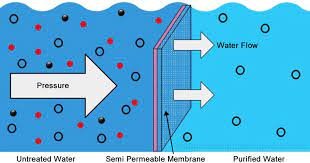Public Water System PFAS: Navigating the Challenge of Contaminants in Our Drinking Water
Introduction
In recent years, the presence of per- and polyfluoroalkyl substances (PFAS) in public water systems has emerged as a critical concern for municipal directors, environmental engineers, and plant operators alike. These "forever chemicals" have been linked to serious health issues, prompting urgent calls for systematic testing and remediation. As of July 2025, the regulatory landscape regarding PFAS has shifted significantly, requiring public water systems to adapt to evolving guidelines from the Environmental Protection Agency (EPA) and local governing bodies. This article delves into the implications of PFAS contamination in public water systems, offering actionable insights for decision-makers to safeguard public health.
Understanding PFAS: The Backbone of the Issue
What are PFAS?
Per- and polyfluoroalkyl substances (PFAS) are a group of synthetic chemicals used for their water- and grease-resistant properties. They are commonly found in various consumer products, from non-stick cookware to water-repellent clothing. According to the American Chemical Society, thousands of PFAS exist, but only a select few have been studied extensively.
Health Risks Associated with PFAS
Emerging research indicates that PFAS can have severe health effects, including:
- Cancer: Elevated levels of certain PFAS have been linked to an increased risk of prostate, kidney, and testicular cancers.
- Reproductive Toxicity: Studies show potential links to reduced fertility and developmental issues in children.
- Immune Response: PFAS exposure may weaken immune responses, making individuals more susceptible to infections.
A 2023 study published in the Journal of Environmental Health noted a striking correlation between PFAS concentrations in drinking water and the incidence of certain cancers, further complicating the public health narrative.
The Current Regulatory Framework
EPA Regulations as of 2025
As of mid-2025, the EPA has set stricter enforceable limits for PFAS in drinking water. According to the updated National Primary Drinking Water Regulations (NPDWR), public water systems must monitor for specific PFAS compounds, including PFOA and PFOS. The proposed maximum contaminant levels (MCLs) are as low as 4 parts per trillion, making compliance a high-stakes endeavor for municipalities.
Additionally, the EPA has mandated:
- Monitoring and Reporting: Public water systems must regularly test for PFAS and report findings.
- Remediation Guidelines: Systems exceeding MCLs must develop remediation plans within a designated timeframe.
State Regulations
Many states have taken action, establishing their own limits that often exceed federal requirements. For example, California has proposed a maximum contaminant level of 2 parts per trillion for PFOA. Municipalities must remain vigilant to comply with both state and federal standards to avoid potential legal repercussions.
Technological Solutions for PFAS Removal
Filtration Technologies
Activated Carbon Filtration
Activated carbon systems are commonly employed to remove PFAS from drinking water. These systems work by adsorbing PFAS compounds, preventing them from passing through to the final treated water. A 2024 industry report indicated that activated carbon systems show up to a 90% reduction in PFAS concentrations.
Reverse Osmosis
Reverse osmosis is another effective technique that can remove a wide range of contaminants, including PFAS. This method utilizes a semi-permeable membrane to filter out salts and impurities. Research recommends hybrid systems that employ both reverse osmosis and activated carbon for optimal PFAS reduction.
Emerging Technologies
Recent developments in advanced oxidation processes (AOP) present a promising avenue for PFAS treatment. AOPs utilize powerful oxidants to decompose PFAS compounds into harmless byproducts. While still in pilot phases, early studies show up to 99% degradation of specific PFAS types.
Monitoring and Testing Protocols
Regular Sampling
Public water systems must establish a robust monitoring framework. Regular sampling should include:
- Frequency of Testing: States recovering from historical contamination might require monthly testing, while compliant systems might test quarterly.
- Sampling Locations: Both source water and distribution systems should be tested to ensure comprehensive coverage.
Data Management and Reporting
Municipalities are encouraged to leverage data management systems for tracking PFAS testing results. Cloud-based solutions can help maintain records, facilitate reporting, and streamline the remediation planning process.
Community Involvement and Communication
Transparency and Education
Building community trust is critical in addressing PFAS concerns. Public water systems should:
- Communicate Findings: Regularly inform the community about water quality, test results, and remediation plans.
- Engage Stakeholders: Hold town hall meetings to discuss concerns and gather public input.
Advocacy and Policy Support
Collaboration with local legislators can strengthen efforts for effective PFAS management. Key actions include advocating for:
- Increased funding for research and technologies aimed at PFAS remediation.
- Legislative support for stricter testing and monitoring laws.
Conclusion
As we navigate the complexities surrounding PFAS contamination in public water systems, it’s imperative that municipal leaders, environmental engineers, and plant operators adopt a proactive approach. With the regulatory landscape evolving, investing in innovative treatment technologies and fostering community engagement will not only ensure compliance but will also help protect public health for generations to come. By prioritizing transparency and responsibility, public water systems can turn a challenge into an opportunity for improvement, rebuilding trust and maintaining equitable access to safe drinking water.
Informed decision-making today can lead to a healthier tomorrow. Let’s work together to tackle the challenges posed by PFAS in our water supply.
source https://www.waterandwastewater.com/public-water-system-pfas/


No comments:
Post a Comment